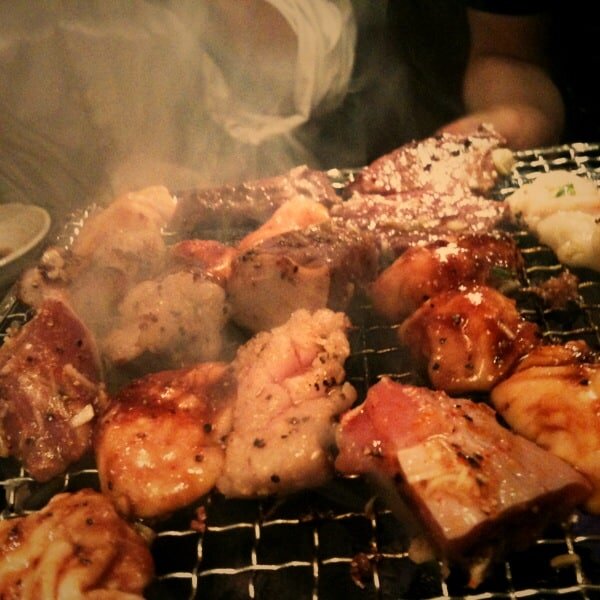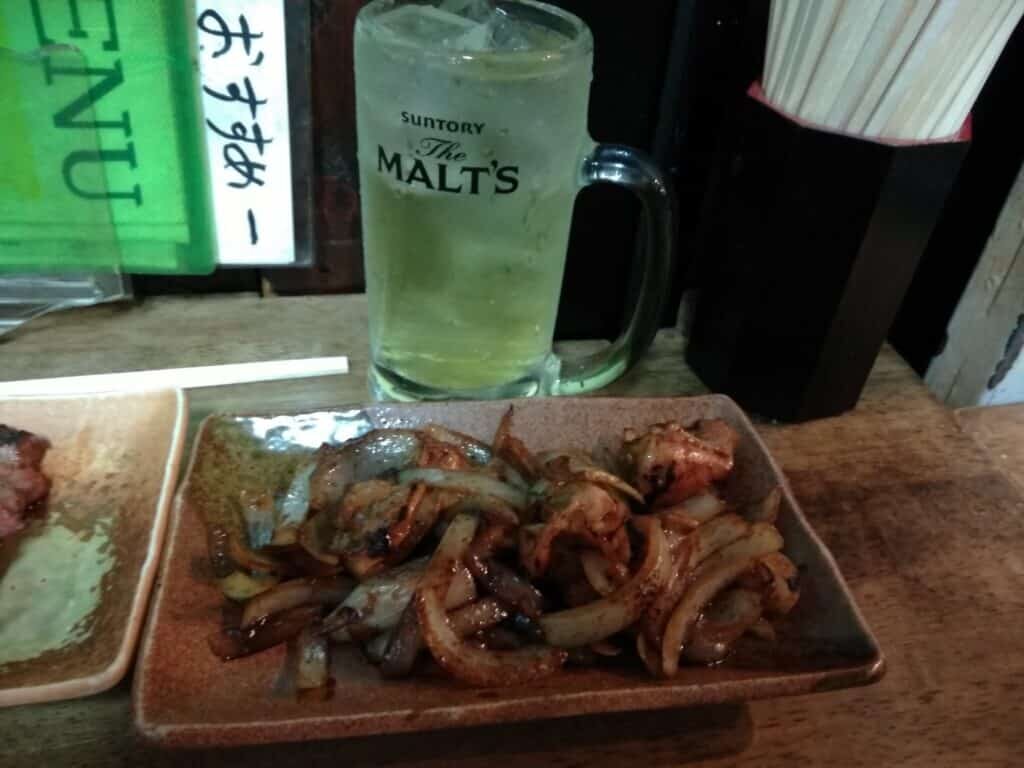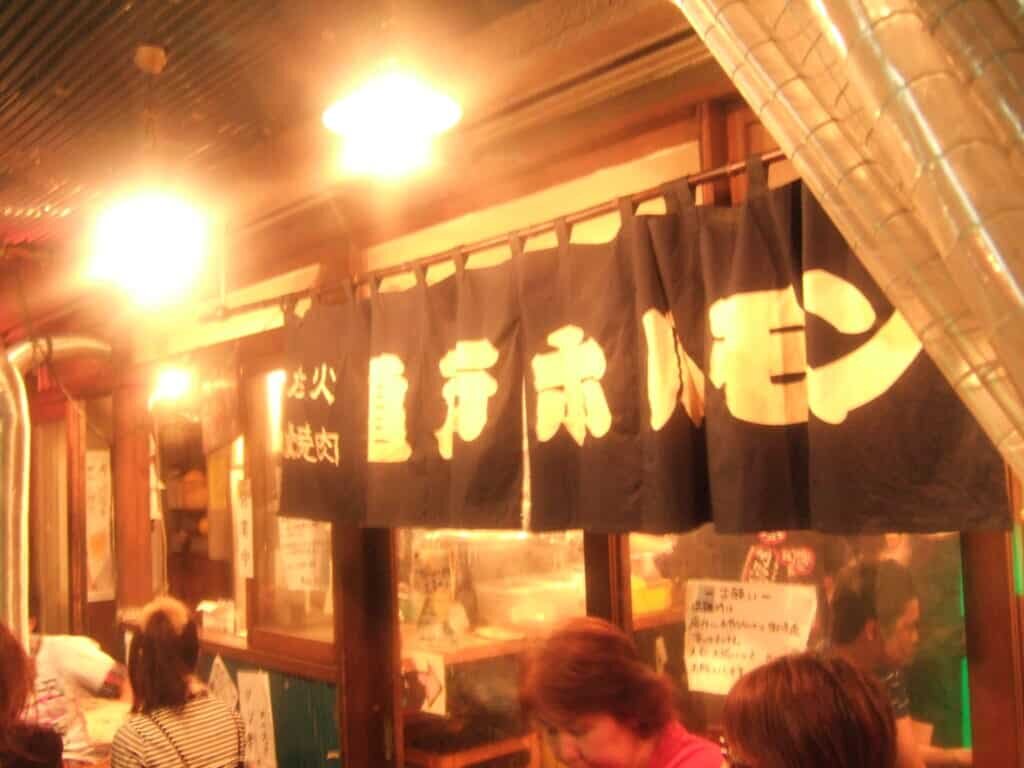
It may not sound the most appetizing, but if you can be brave, this could be a tasty treat for you!
What is Horumon?

If there’s one thing that the Japanese share in common with the Scots of the land of my birth, it is a shared notion that, no part of an animal should ever go to waste whilst someone is hungry.
This is why haggis, made from sheep offal, is such a big hit in my native Scotland, and why Osakans love their own offal-themed dish, horumon.
In Scotland, when someone makes a mistake in the kitchen, we sometimes say: “Oh no, he’s made an arse of it!”
But in Osaka, where pig rectum is one of many cuts of offal used in Horumon dishes, I guess you could say the locals are taking is idea a little too literally!
Basically, horumon is a hold-over from more austere times. In those days, the prime cuts of meat would always be reserved for the rich; with the off-cuts going to the poor to do with what they could.
Ever the resourceful types, Osaka’s lower castes were able to turn these off cuts into some pretty tasty treats, giving us the horumon dishes we have today
Varieties of Horumon

Horumon is a collective term encompassing all manner of offal from a variety of animals.
Whilst is is not unusual to see the likes of beef hearts and chicken gizzards served up, the vast majority of horumon in Osaka’s many specialist eateries is derived from the carcass of the pig.
Among others, you will find the esophagus, heart, pulmonary artery, intestine, pancreas, uterus, mammary glands, and of course that most inviting of all offal dishes, a pig’s rectum!
These can be prepared in a number of different ways, however as horumon is a derivative of yakiniku in many respects, the most common way to enjoy it is to marinate it in a sweet or spicy sauce and then grill it over hot charcoal. You will notice upon initial taste however that many cuts, especially the intestines, have something of a rubbery textrure, similar in that respect to squid, though the flavor is totally different. This can be a bit off-putting at first, but once you get used to it, it’s actually rather tasty.
Where to buy Horumon

As horumon is classed as something of a poor man’s food, the best places to find good horumon restaurants are actually in the poorer areas of Osaka. The likes of Juso in Yodogawa Ward, Nishinari Ward, Nishi Ward and Taisho Ward all boast excellent horumon eateries, with excellent prices and a huge variety of different types to try. There are horumon restaurants in some of the suburbs too, and in the more built up nightlife districts like Shinsaibashi, Namba and Umeda. However, I recommend that you avoid these “tourist traps”, as they are offering pretty much the same as you will get in the more working class areas but for a vastly inflated price, justified purely by middle class pretentiousness.
How to make Horumon

As the cuts of meat used in making horumon aren’t typically cuts of meat sold in conventional butcher’s shop in most countries outside Japan, acquiring the necessary stocks to make your own horumon at home could prove tricky.
However, if you ask your local butcher, subject to local hygiene rules in your country, he may be able to provide you with some off cuts that you can use in preparing your horumon dishes.
Remember, horumon is a non-specific dish, so any kind of entrails will do.
Suggested ingredients:
300 grams of entrails (beef, chicken or pork will do)
1 bottle of soy sauce
A teaspoon of pureed garlic
A teaspoon of lemon juice
A dash of chilli oil
Sugar
Steps:
Once you’ve got hold of some entrails, the process for preparing the meal is, pretty much the same as that we would follow for preparing yakiniku. As I mentioned earlier, horumon is essentially yakiniku’s poorer relative, though entrail enthusiasts would no doubt vehemently refute this notion.
In any case, you should start by dicing your meat, whatever it may be, into small chunks. You should then make up a marinade of soy sauce, a little sugar, lemon juice and pureed garlic. Blend these items together until they make a smooth sauce. Marinate your entrails in this sauce, ensuring they are completely coated and leave it in the fridge for about one hour.
Heat a little sesame oil in a frying pan, and then drop your entrails in. Cook the entrails over a medium to high heat stirring regularly until cooked all the way through. Serve them on a bed of cabbage with rice wine vinegar.
Maybe it’s because I love a bit of haggis, but I really do feel that horumon gets something of a bad rep from tourists visiting Japan these days. Be brave, don’t listen to the hype. Give it a try and I think you may be pleasantly surprised.
























